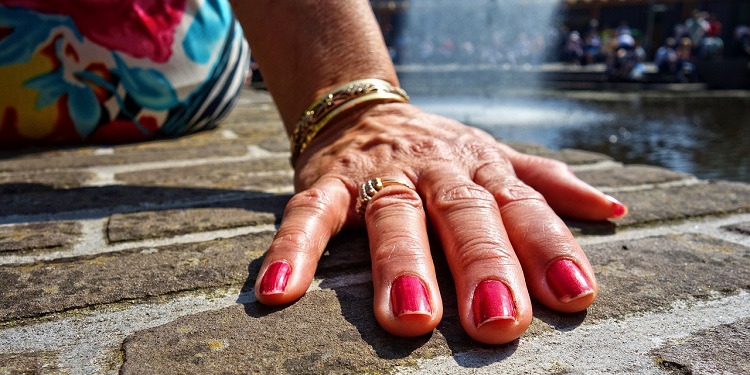Treating Splinter Hemorrhages (A Fingernail Abnormality)

A splinter hemorrhage is a type of fingernail abnormality. It looks similar to a splinter below the nail and it is red in color. The streaks on the nails are longitudinal. This issue results from small blood vessels in the nail bed either swelling or leaking. Microemboli, or tiny clots, in the capillaries may also result in this type of hemorrhage.
Splinter Hemorrhage Causes
Before exploring which treatment options exist, it is important to know what can cause a splinter hemorrhage to occur. Approximately 20 percent of these occur as a result of trauma to the nails (Han, M.J., et al, 2010). Trauma may include injuries, such as smashing a finger in a vehicle door or hitting the affected nail against a hard object.
Certain medical conditions might have splinter hemorrhage as a symptom. These may include:
- Infectious endocarditis: Strep or another underlying infection or IV drug use may cause this condition. In the later stages, splinter hemorrhages may occur.
- Nail psoriasis: The nails and nail beds can experience damage due to this condition in some cases.
- Antiphospholipid syndrome: Blood clots developing in the veins is characteristic of this condition.
- IV drug abuse: Injecting such drugs may damage the blood vessels.
- Systemic lupus erythematosus: This is an autoimmune disorder. Circulation to the fingers changing is one of the possible symptoms.
- Rheumatic heart disease: In some cases, strep throat can progress to this condition, damaging the heart.
While rare, there have been instances where the use of certain medications has been linked to splinter hemorrhages. Some of these medications include aspirin, certain chemotherapy drugs and warfarin.
Treatment When Caused by Trauma
When trauma is the cause, treatment is usually not needed. The nails will grow as usual and the hemorrhages should disappear with time. On average, this takes approximately three to four months. If the trauma causes damage to the nail or nail bed, treatment for these issues might be indicated, however.
Helping to ensure that the nails are strong may also be beneficial. Make sure to stay hydrated and eat a diet that provides your nails with the nutrients they need for optimal health. Pay special attention to getting sufficient zinc and B vitamins.
Treatment When Caused by a Medical Condition
When an underlying medical condition is the cause, properly treating it may help to alleviate any associated splinter hemorrhages. For example, if nail psoriasis or lupus are responsible, an immunosuppressant or corticosteroid may be beneficial. For an infectious issue, antibiotics might help.
Treatment When Caused by a Medication
In these instances, you and your doctor will work together to determine if a medication adjustment is a good option. If possible, this may allow the splinter hemorrhages to disappear much like they will when recovering from nail trauma. Never cease taking a medication without first talking to your doctor.
General Treatment Options
If the splinter hemorrhage is causing discomfort, applying a cold compress may help to alleviate it. Apply it for 15 to 20 minutes at a time. Make sure to place a cloth between the cold pack and your skin first. Over-the-counter pain medication, such as acetaminophen or ibuprofen, may also be indicated to reduce discomfort.
Make sure to protect the affected nail. Do what you can to reduce the risk of trauma to the nail. Ensure that the affected nail is not aggravated.
Prognosis and Outlook
Overall, the cause of the splinter hemorrhage and the patient’s general health both play a role in how long it might take to resolve. Your doctor can provide more accurate information concerning your individual prognosis.
References
Haber, R., et al. (2016). Splinter hemorrhages of the nails: a systemic review of clinical features and associated conditions. International Journal of Dermatology. 55(12), 1304-1310.
Han, M.J., et al. (2010). Asymptomatic linear hemorrhages. American Family Physician. 81(11), 1375-1376.
Mayeaux EJ Jr. (2000). Nail disorders. Primary Care. 27(2),333–351.
Saladi RN, et al. (2004). Idiopathic splinter hemorrhages. Journal of the American Academy of Dermatology. 50(2),289–292.
Tosti A, et al. (2006). The nail in systemic diseases. Dermatologic Clinics. 24(3),341–347.



